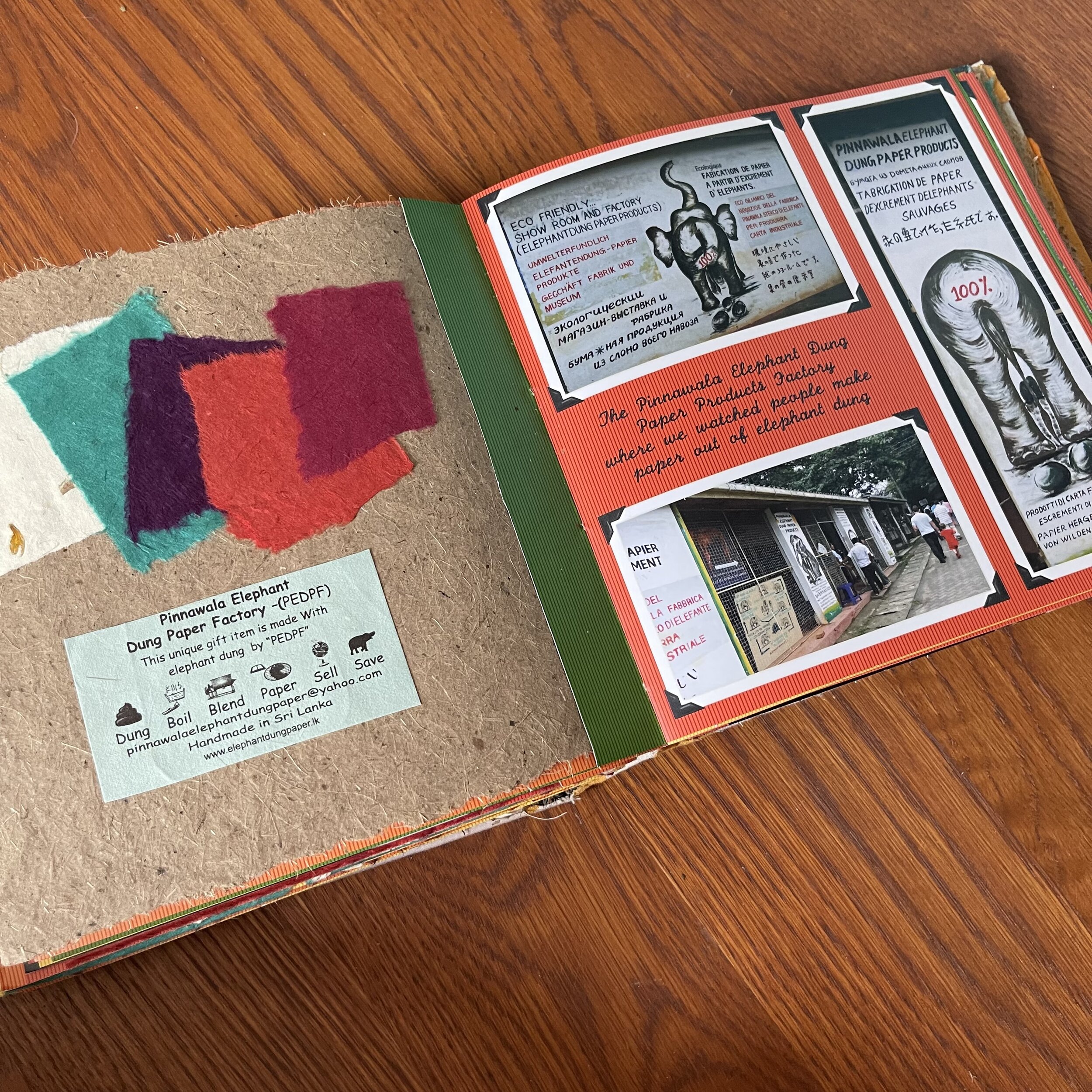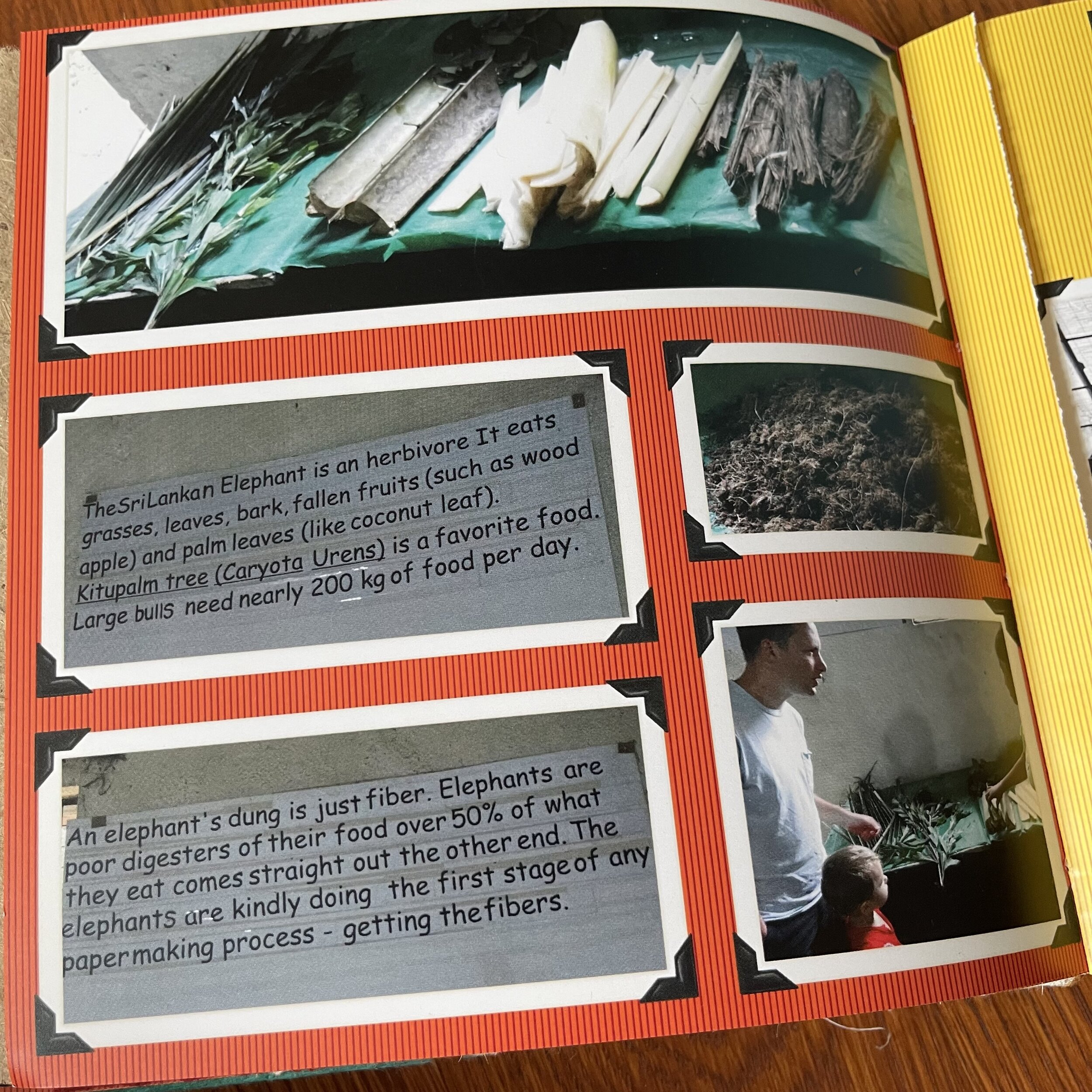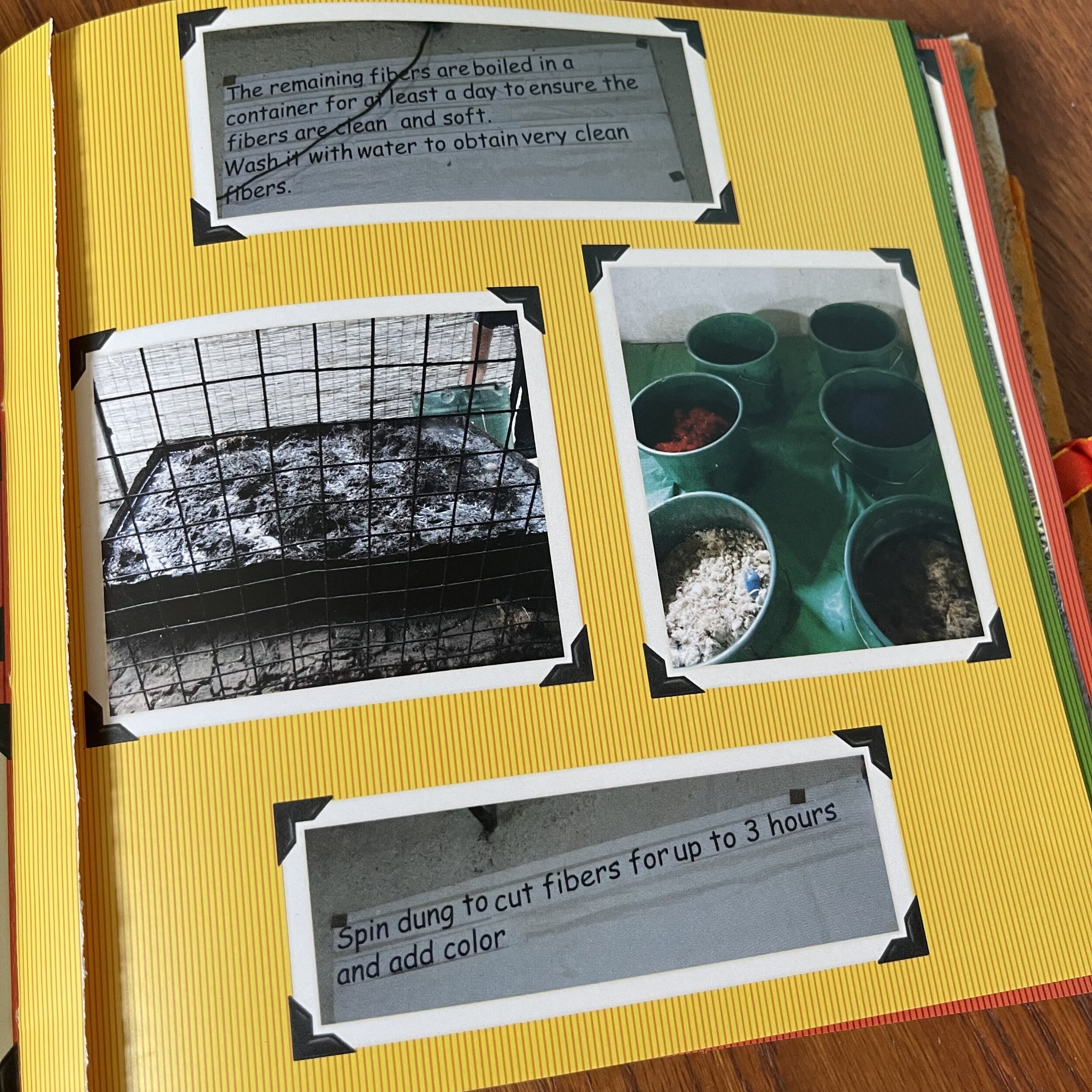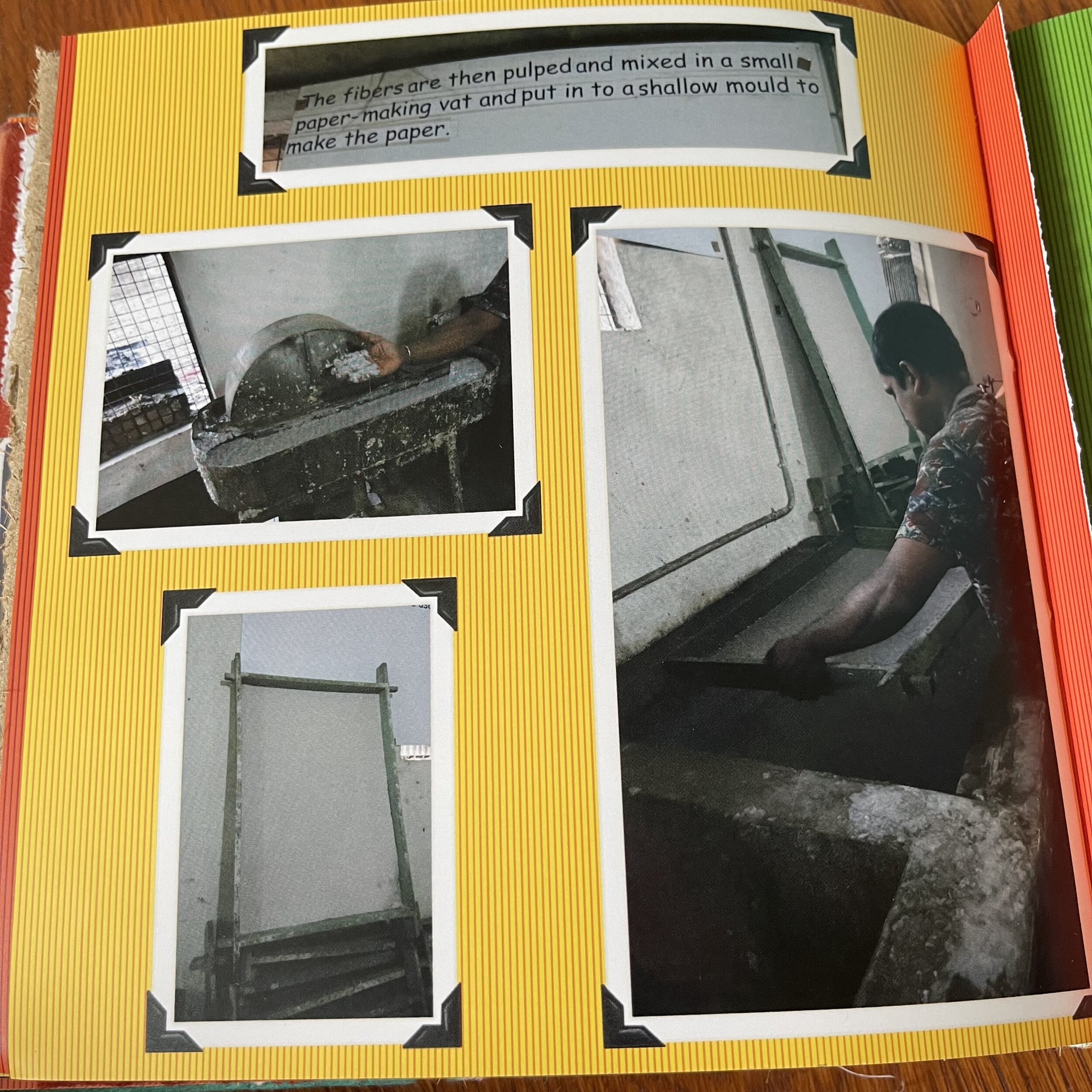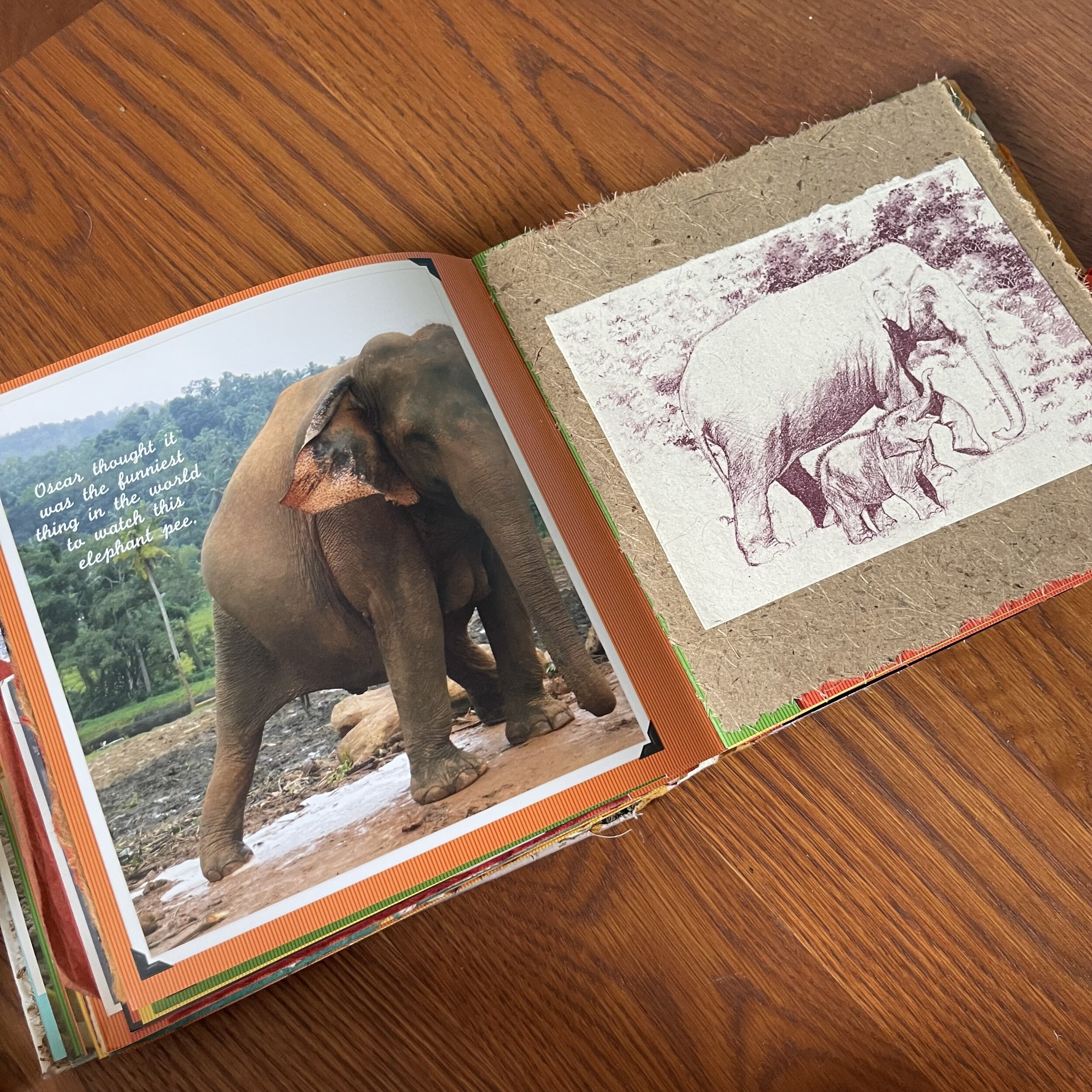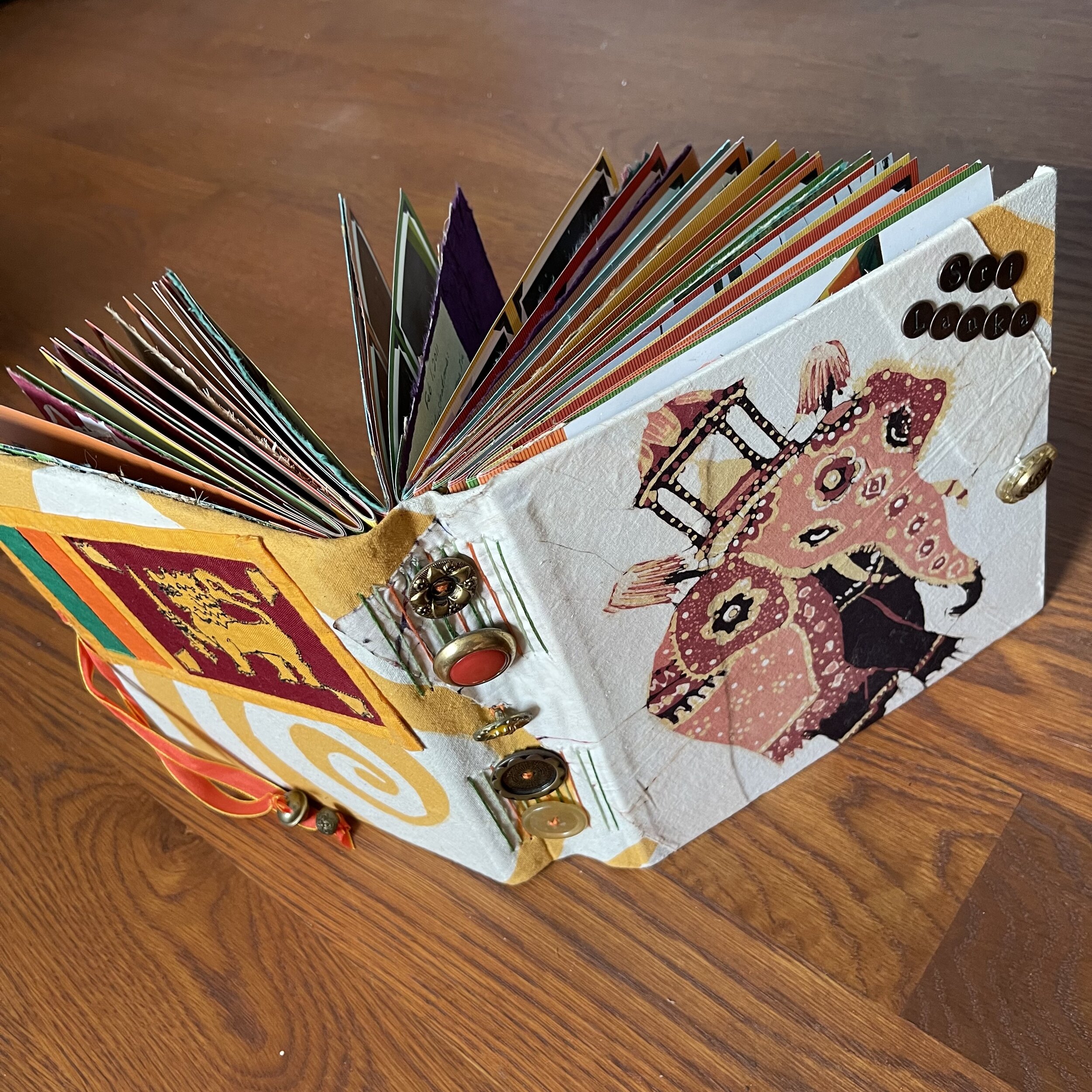Happy World Elephant Day! This is a picture from many years ago of of me and my son Oscar in Sri Lanka at an elephant orphanage. We lived in SE Asia for a few years when he was small, we traveled a lot, and to keep him engaged I sought out lots of experiences that would delight a kid. So we had a lot of elephant adventures. This is mostly how I fell in love with elephants and came to write my book, THE ELEPHANTS’ GUIDE TO HIDE-AND-SEEK.
During this particular adventure in Sri Lanka, we learned that elephant dung is great for paper-making! Seeing as I’ve made lots of paper in my lifetime and even often use my own handmade paper in my art, this was particularly interesting to me. The reason elephant dung is great for paper making is that it’s full of munched up fibers—kinda like the elephant’s digestive system acts as a pulp beater. Gross, but cool!
The photo album in these pictures is one of my handmade travel journals, I used a batik I bought in Sri Lanka for the cover, and a lot of the papers inside are elephant dung papers I bought there. Also that cute little elephant stuffie is one I bought at a fiber store in Columbo.
I also wrote a blog post about elephant dung paper-making way back when I went to Sri Lanka. Here’s the link.

